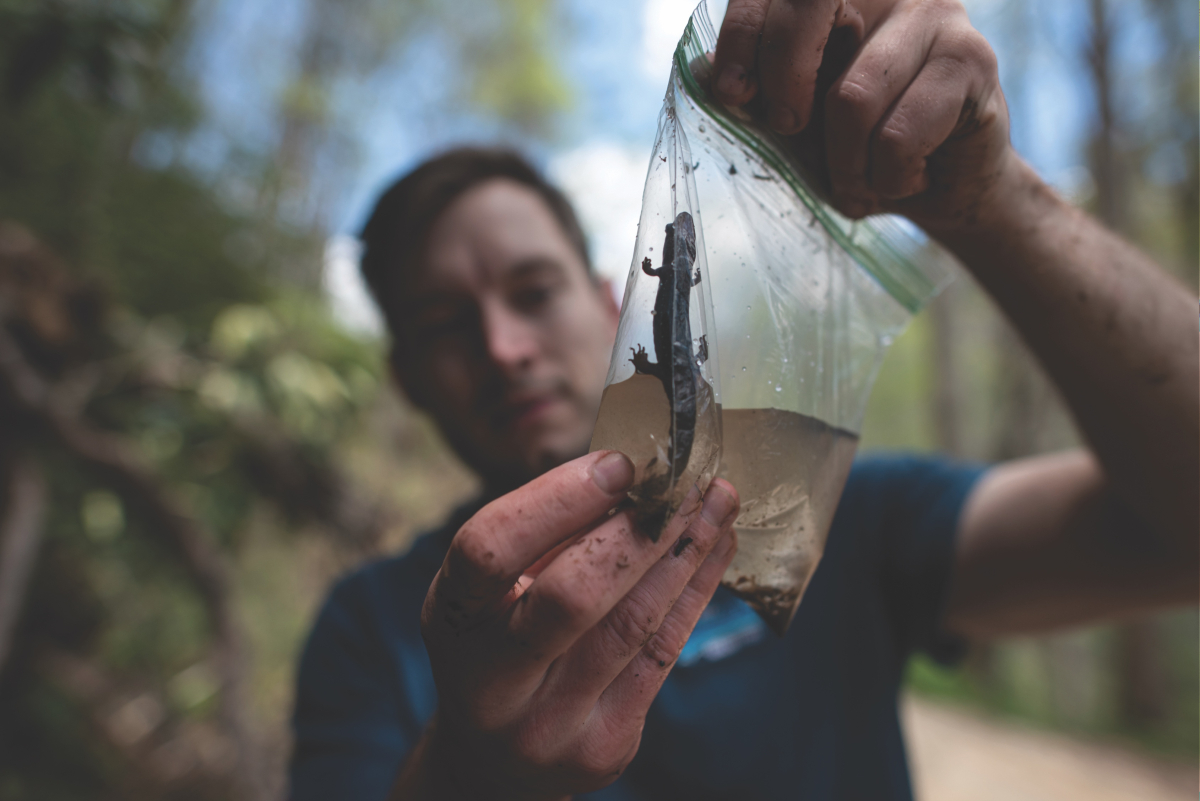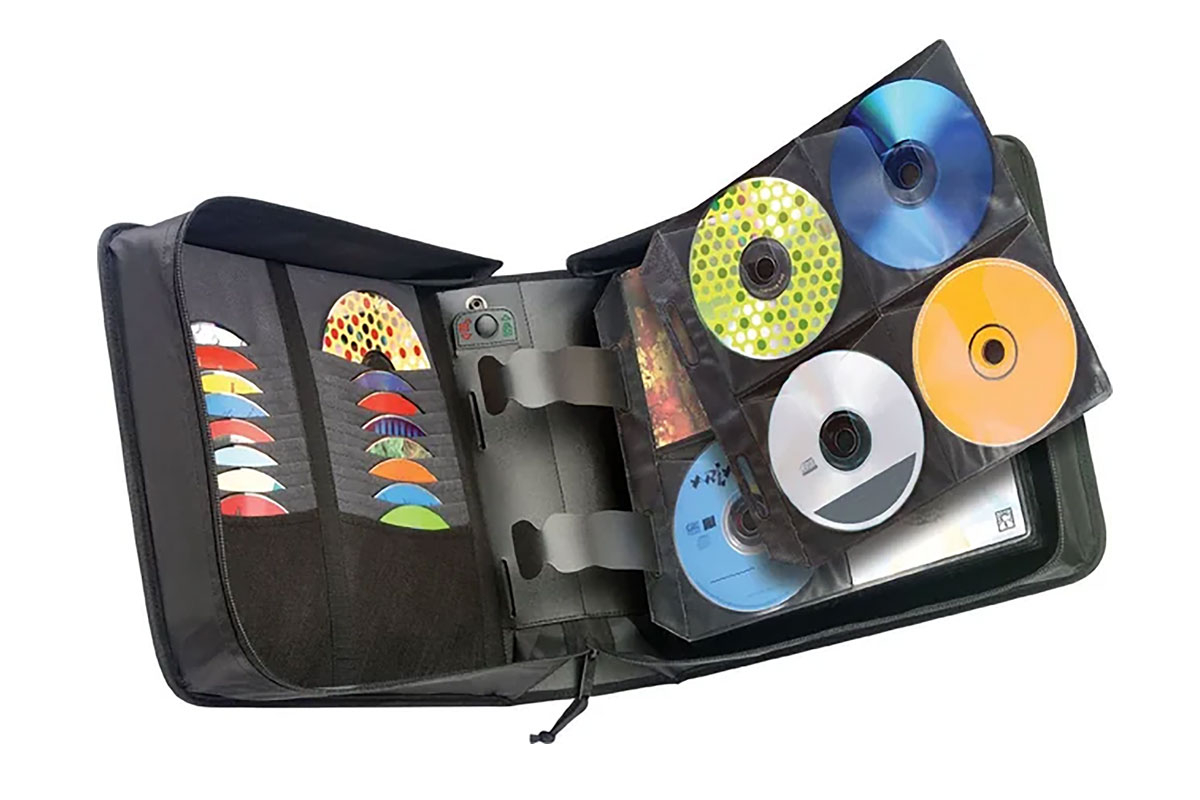Admin
A new associate degree program at Haywood Community College will upgrade the existing one-year diploma program in auto body this fall.
The Collision Repair and Refinishing Technology program will prepare students to become qualified technicians to perform repairs and refinishing techniques on automobiles and diagnose and repair mechanical and electrical problems. Graduates will be qualified to take the National Institute for Automotive Service Excellence (ASE) certification examinations and also for entry-level employment in automotive dealerships, independent repair shops or self-employment as collision repair and refinishing technicians. Early registration is June 7 through June 8. 828.627.4581.
Know someone, maybe yourself, who should be minority businessperson of the year?
The Minority Enterprise Development Week Committee is now accepting nominations for this year’s awards.
Businesses open for at least two years can nominate themselves. In addition to the overall winner, awards will be presented to category winners in construction, manufacturing, restaurant, retail and service. For businesses open fewer than two years, a nomination for a new award, Outstanding Emerging Business, can be submitted.
The awards are open to minority small business owners from Haywood, Jackson, Macon, Swain, Madison, Buncombe, Clay, Cherokee, Graham, Henderson, and Transylvania counties.
All nominations must be received by June 30. The self-nomination forms can be found at www.wncmedweek.org, or 828.497.1670.
A grandparent support group will meet from 11 a.m. to 1 p.m. on Wednesday, June 1, at the Jackson Family Resource Center in Sylva. Grandparents will have opportunities to share their own experiences as a grandparent, including struggles or successes. Topics include grandparents as parents again, seeking visitation, activities and more.
Health and Prosperity
Two of the main arguments in favor of Corridor K construction are safety and economic growth. Road advocates maintain that having an easily traveled corridor into the area will allow larger companies — and their requisite supplies and equipment — to set up shop there. It would also give faster, safer access to health care. Residents must now traverse steep and winding two-lane roads to get to nearby hospitals and doctors’ offices. Ambulances can take up to two hours getting to Asheville’s Mission hospital, since their rescue helicopter can only reach the area in clear weather.
Melba Millsaps
Job: Nurse
Lives in: Robbinsville – her home is in the road’s path
Position: Supports
“I really love where I live, and as much as I love living there, even more than that I want this road built. I know how important it is to receive quick medical care when you need it. We need to have quicker access to health care, which could mean the difference between life and death, so I’m for the road. Is it going to impact me? Yes, it is. But you know what? I’m thinking about my grandchildren and how to make it easier on them in the future.”
The Brain Drain
Many in Graham County are concerned about the brain drain that lack of economic opportunity creates there. Unemployment is high — just above 16 percent in March — and there is no community college within the county. Some road proponents are hopeful that a 4-lane will allow their top young minds to commute to college instead of leaving the county, and that it will entice industry that can provide them jobs after graduation.
David Matheson,
Job: Principal at Robbinsville High School
Lives in: Robbinsville
Position: Supports
“Our No. 1 export in Graham County is our young people. The young people that we are exporting are the top 10 or 15 percent of our graduating class, every year. Our school is performing miracles with our kids, but they don’t have the ability to come back to Graham County and make a decent living. This road is the first step and this road needs to be built, even if you have to bulldoze my house to start it.”
Environmental Destruction
Deleterious effects on the environment and natural mountainous character are the reasons some opponents list when making their case against the road. The new highway would cut a wide swath through Stecoah, and opponents highlight the changes it would bring to the region’s rugged mountain character. They also point to the road’s potential for environmental damage from leaching from acidic rocks to threats to native species.
Instead, they advocate for improving the existing two-lane road, making it less narrow and curvy, rather than building a brand-new highway.
Ken Brown,
Job: Chairman of the Tuckasegee Community Alliance, a chapter of the WNC Alliance.
Lives in: Sylva
Position: Against
“The WNC Alliance has long been opposed to the Corridor K proposal because of the effects on rare and endangered species and the Stecoah valley. We believe that growth should be appropriate to the region and should be managed to maintain the world-class natural resources we have here. We want [the North Carolina Department of Transportation] to undertake a more in-depth analysis of upgrading the current right-of-ways.”
Whole Road or No Road
One opposing camp believes the proposed segment of highway would be useless unless the final link of Corridor K — section A, stretching from Robbinsville to Andrews — also gets built. They say a four-lane highway into Robbinsville petering out to a two-lane wouldn’t bring a significant increase in traffic, just a significant expense.
Josh Carpenter
Job: Cherokee County planner
Lives in: Robbinsville
Position: Against
“I think the most important section of this road is the A section. If that’s not completed, I don’t think we’ll have any positive impact from the overall impact of the road. The road will make change and I think that Robbinsville and Graham County need to prepare for that.”
Way too costly
Other challengers to Corridor K cite its high cost — $383 million. $197 million of that would build the tunnel. Corridor K is a part of the Appalachian Development Highway System, and the federally allocated ADHS fund would foot 80 percent of the bill, with a 20 percent match from the state. Detractors say that the $3.46 million per mile is far too much, and that economic benefits won’t offset the costs.
Jim Grode
Job: Executive director of WaySouth, a group that promotes sustainable transport in Appalachia
Lives in: Asheville, N.C.
Position: Against
“If we make the generous assumption that North Carolina keeps getting about the same annual amount of federal money for this highway, the earliest it could have enough money to finish this project is in 2028. The bumper stickers that say ‘the money is there, build the road now’ would be more accurate if they said ‘a fifth of the money is there, build the road in 20 years.’ It will take over 75 years for the benefits to equal the cost. That’s a payback period no investor would ever touch, and this road may literally never pay for itself.”
Bryson City resident Jane Spotted Bird will read from her recently published memoir, Still Here: Dancing to the Beat of My Own Drum, at 2 p.m. on Saturday, May 21, at City Lights bookstore in Sylva.
The book tells the story of her journey after receiving a diagnosis of state IV cancer in 2008, when she was given six months to a year to live. She has now survived well beyond what her doctors expected and is healthy.
Spotted Bird will read selections from the book and take questions and comments from the audience. An signing will follow her remarks.
828.586.9499.
The Marianna Black Library in Bryson City will host an afternoon with Kim Michele Richardson, author of The Unbreakable Child: a Memoir of Forgiving the Unforgivable, at 1 p.m. on Saturday, May 21. She will discuss her book and present a program on the publishing process.
Richardson currently works with universities, schools and libraries, focusing on writing and the steps to publication.
828.488.3030 or visit fontanalib.org/brysoncity.
The Waynesville Parks and Recreation Department will offer TetraBrazil Soccer Camp for ages 10 to 18 July 11 through 15 at the Waynesville Recreation Center.
The camp will offer Brazilian coaching staff, individual technical development and a unique cultural experience. Learn new fakes, moves and tricks. Also, register by May 27 and receive a free soccer ball and camp T-shirt.
There will be a morning or afternoon half-day camp, or a full-day camp. The half-day camp is $135 per person and the full-day camp is $182 per person.
Since 1999, TetraBrazil Soccer Academy has been bringing Brazilian soccer expertise to American soccer players. www.challengersports.com or 828.456.2030.
Carolina Mountains Soccer Club in Haywood County is holding tryouts May 24 through 26 for the coming season.
The soccer club is designed for youth players who have the skill, drive and desire to take their development to the next level. There are three programs ranging in their level of competitive play. The club is affiliated at the state level with the North Carolina Youth Soccer Association.
Go to www.cmsoccerclub.org for the try-out schedule. 828.593.8280 or This email address is being protected from spambots. You need JavaScript enabled to view it..
Adults with a hankering for soccer this summer can sign up to play in a league run by the Haywood County Recreation and Parks.
There is a open league and a women’s league. Teams in the open league (maximum of 10 teams) may include women, but don’t have a co-ed requirements. The women’s league (maximum of six teams) is for women only. Maximum roster for teams in either league is 13.
Games are on Monday and Wednesday evenings at Allen’s Creek Park from June 13 through August 3. Games will consist of seven versus seven, with each half lasting 25 minutes. The registration fee is $365 per team, which includes a soccer jersey for each player and tournament prizes.
To register a team, or for those who want to play but don’t have a team to play on, contact Scott Worley at 828.452.6789 or email This email address is being protected from spambots. You need JavaScript enabled to view it..
Do you want to attract more birds, butterflies, beneficial insects and other native species to your backyards? It’s easy, fun for the family and an important way to help restore native habitats.
Friends of Rickman Store, in the historic Cowee Valley area of Macon County, has joined an effort through National Wildlife Federation to certify backyards as “wildlife habitats” by meeting some simple, but important goals. The components for certification are to provide adequate water, food, cover, places to raise young and sustainable gardening practices.
The group is hosting several outings and workshops as part of a summer Gardening for Wildlife Series.
On May 22 visit Mary and Stan Polanski’s certified backyard in Oak Grove. This small treasured patch hosts an old-fashioned kitchen garden surrounded by native plants and wildlife-friendly features that portray a quiet respect for nature.
Meet at Cowee Elementary School at 3 p.m. 828.349.5201 or 828.369.5595.
For future programs in the series, call 828.349.5201 or watch the Outdoors calendar in The Smoky Mountain News
The Great Smoky Mountains Audubon Society will hold a Backyard Habitat Workshop from 10 a.m. to 2 p.m. Saturday, June 4, at the Maggie Valley Pavilion.
Come learn how to transform yards into native plant and wildflower paradises. Presented by Sara Martin, biology instructor at Haywood Community College. Bring photos/layout of your yard, notebook and lunch.
Register by sending a $20 check payable to GSMAS, P.O. Box 1262, Maggie Valley, NC, 28751. 828.550.5449 or This email address is being protected from spambots. You need JavaScript enabled to view it..
Western North Carolina stargazers will be able to witness a rare astronomical phenomenon this month when four of the five planets visible to the naked eye can be observed close together in the early morning sky.
That’s the word from Paul Heckert, professor of astronomy and physics at Western Carolina University. Mars, Jupiter, Venus and Mercury will be very close together just above the southeastern horizon in the predawn sky during May, Heckert said.
“For sky-watchers in Western North Carolina, the planets will be low in the sky, and anyone wanting to observe them will need a very good southeastern horizon, such as on a mountaintop or high on a southeastern slope,” he said. “Also, because they will be low, the fainter planets could be lost in the glare of the morning twilight without binoculars or other optical aid.”
Jupiter and Venus will be the two brightest objects visible, he said. In the second half of May, Jupiter will be easy to spot and higher than Venus in the sky.
Venus, Mercury and Mars have their closest approach on the morning of May 21, a close grouping that will last until the morning of May 25. For the rest of May, the four planets will move further apart.
“Providing one last treat for stargazers, the thin waning crescent moon will pass close to these planets from May 29 to May 31,” Heckert said. “The fifth naked-eye planet, Saturn, will be visible all night in May, but will be setting in the west in the twilight hours, not in the east where the other planets can be seen.”
The Mountain Sports Festival returns to Asheville on May 27-29, with a line up to entice any pro or amateur athlete to test themselves in mountain sports.
The festival brings in more than 15,000 visitors and competitors.
Competitions will take place throughout the weekend beginning with Rock-2-Rock Trail Run in Black Mountain and the Disc Golf Challenge at Festival Village, followed by the brand new Cyclocross Race and Longboarding.
Saturday, there’s a full schedule of high-energy competition highlighted by the Mountain Disc Golf Challenge, French Broad Challenge Triathlon, Urban Mountain Bike Challenge, 2011 Wheel Ride for Food, Dodgeball Tournament and the Climb Max Climbing Competition.
Sunday, the events are still in high gear with more of the Mountain Disc Golf Experience, Sand Volleyball Tournament and the Ultimate Frisbee Clinic.
A wildcrafting, general make-your-forest work for you workshop is scheduled from 4:30 p.m. to 7 p.m. May 26 at the Cashiers library in Jackson County.
Topics include new ginseng regulations, how to start an agro-forestry business, green certification and branding and more. The event is sponsored by Jackson-Macon Conservation Alliance, the WNC Forest Products Cooperative Marketing Project, the Forest Service Southern Research Station and Land of Sky Regional Council
On tap to speak are specialists such as: Jeanine Davis, N.C. Cooperative Extension Service; Alyx Perry, director of the Southern Forests Network; Brian Schneider, management forester at DuPont State Forest.
Call or email if planning to attend. Donations accepted. 828.526.0890, ext. 256 or This email address is being protected from spambots. You need JavaScript enabled to view it..
Volunteers are needed at the bird-monitoring station at Tessentee Bottomland Preserve in Macon County.
The program is a nationwide effort coordinated by the Institute for Bird Populations to monitor productivity, survivorship and population trends of breeding birds throughout North America.
Southern Appalachian Raptor Research, based in Mars Hill, is conducting the second season of monitoring at the Tessentee Bottomland Preserve, a tract owned by the Land Trust for the Little Tennessee.
Volunteers can help by setting up nets, picking and banding birds, birding surveys, vegetation surveys, paperwork and data management. Data samples are taken once every 10 days during late spring and summer. This email address is being protected from spambots. You need JavaScript enabled to view it..
Want to see some of the best fly-fishing imaginable? The 2011 U.S. National Fly Fishing Championship will be held May 19 through May 22. It will be headquartered in Cherokee with fishing held on several waterways in the region
The event is hosted by the N.C. Fly Fishing Team, in partnership with the Eastern Band of the Cherokee Indians Fish and Wildlife Management and the Cherokee Chamber of Commerce.
This is the first time the event has been in the Southeast. The championship will see 60 of the top fly fishermen from around the U.S. Competitors for the 2011 National Fly Fishing Championships first had to qualify at regional competitions around the country.
Numerous businesses, organizations and volunteers have worked together to host the event here.
“There has been a true partnership with everyone doing what they can to help make the event successful,” said Matt Pegg, Executive Director of the Cherokee Chamber of Commerce, who is excited about the exposure the event will bring.
More than 100 volunteers are assisting with the event. To help out, contact This email address is being protected from spambots. You need JavaScript enabled to view it..
Catch some of the action
Spectators are welcome to watch the competition. Competitors are split into groups and dispatched to one of five rivers. They then rotate over the course of the competition. Each river is divided into sections, with anglers assigned a specific section so they won’t be bumping into each other.
• Lower Nantahala River from just above Little Wesser Falls to the double bridge at Winding Stair Road.
• Cherokee Trophy Waters of the Raven’s Fork River, from the Blue Ridge Parkway Bridge to the pedestrian bridge at a campground.
• Tuckaseegee River, from the N.C. 116 bridge in Webster upstream to the N.C. 107 Bridge
• Upper Nantahala River from the confluence of generation canal just beside the Duke Energy Power Plant upstream to White Oak Creek.
• Calderwood Reservoir below the Cheoah Dam.
Anglers will be practicing on other area waters all week, but are barred from fishing on the competition sections until the competition day.
A “Bike to Work” ride will be held in Waynesville May 20 on National Bike to Work Day. The length is about three miles and is mainly over flat terrain.
The ride will begin at the large parking lot beside the new Super Wal-Mart at 8 a.m. The ride will follow South Main Street to Brown Avenue, go through the Hazelwood and by Waynesville Middle and Central Elementary School, a cruise down Waynesville’s Main Street before ending at the town’s mini-park at the intersection of Depot and Main streets.
At the conclusion of the ride, participants will be treated to coffee and pastries by ride co-sponsor Smoky Mountain Café. Members of BicycleHaywoodNC will be available to answer questions and take comments about the Haywood County Bike Plan currently under development.
Participants should arrive early to register, and should provide their own bicycle and helmet. This email address is being protected from spambots. You need JavaScript enabled to view it. or www.bicyclehaywoodnc.org.
Hiwassee-Valley Land Trust, a project of the Land Trust for the Little Tennessee, has purchased the 100-acre Salman Farm that lies on Valley River near Andrews.
The farm was acquired by the land trust last month, and is now protected by a conservation easement that ensures the land will remain available for agriculture, stream and wildlife habitat, and passive recreation. The conservation easement allows one residence, as well as barns and other farm structures.
Lying near Andrews, about a mile and a half west of the airport, the Salman Farm contains exceptional surface waters, productive farmland, cultural history and scenic beauty. In addition to almost 4,500 feet of Valley River frontage, the farm holds portions of three creeks as well as 3,000 linear feet of oxbow wetlands — the old, meandering channel of Valley River — which provide outstanding waterfowl habitat. Streams and oxbows will be protected by buffer areas of native trees and shrubs, leaving two-thirds of the land for farming.
The sandy loam soil in the Valley River floodplain has a history of exceptionally heavy crop yields. This year, a local farmer will lease most of the farmland for corn, soybeans, and beef cattle, while a smaller section will be a community garden tended by local young people through Cherokee County Cooperative Extension’s 4-H program.
The cultural significance of the Salman Farm rests on its being a part of the historic Welch Farm; indeed, the property contains most of the cropland and river frontage of what was, in the early-to-mid 1800s, a two-square-mile estate.
“Welch’s Town” consisted of two village areas in the lower Snowbird Mountains north of today’s Salman Farm, where several Cherokee families escaped the 1838 removal by accepting safe haven provided by John and Betty Welch.
To the Editor:
The Natural Resources Leadership Institute is a multi-faceted instructional and community service program of North Carolina Cooperative Extension at North Carolina State University.
North Carolina is facing tremendous growth and development pressures in some of the most environmentally sensitive areas of the state. Resource extraction, urban and industrial development, and agricultural production can result in diminished resource and environmental quality. These increasing pressures place a premium on natural resource management.
Yet, management of our natural resources is plagued with controversy. Increasingly, disputes arise over such issues as endangered species; private property rights; forest, nutrient, and wetland management; industrial recruitment; air and water quality; and recently, floodplain management.
We believe that people involved in these disputes can reach mutually acceptable solutions by communicating in a more meaningful and effective way, opening the dialogue to include all stakeholders, and negotiating to settle disagreements. However, this will involve unprecedented cooperation from a cadre of strongly committed leaders representing many interests. To settle disputes and reach collaborative solutions to tough environmental issues, leaders must be able to access a network of diverse interests, possess the skills to effectively negotiate for mutually beneficial scientific, technical and social solutions, and work to implement those solutions.
Leadership development is the cornerstone in a larger effort to improve environmental decision-making in North Carolina by expanding our capacity to resolve problems effectively and collaboratively. Building on this foundation, we see the need to teach citizens across the state the fundamentals of collaborative problem solving and participatory decision making. In situations where people disagree on how natural resources should be used, conserved, and protected, citizens and communities often need support in the form of third-party intervention to help them reach collaborative solutions.
We also believe that North Carolinians can take a more proactive approach to collaborative problem solving by coming together to discuss important issues before a dispute arises. Local, regional, and statewide problem-solving forums organized around emerging issues can enable people to engage in meaningful discussion and move to collaborative solutions.
Robert Hawk
Jackson County Extension Director
This email address is being protected from spambots. You need JavaScript enabled to view it.
To the Editor:
The House in Raleigh recently passed a budget with deep spending cuts. According to Forbes.com, House Speaker Thom Tillis (R) said “… retirements, vacancies, turnover and flexibility for local school districts … would reduce actual job losses to fewer than 7,000.” I have seen several interviews with Mr. Tillis, and I was struck by his complete lack of empathy for those people – whatever the number – who will lose their jobs.
Our education system will be the hardest hit by the cuts. U.S. Sen. Richard Burr recently warned that even though North Carolina corporate tax rates are the highest in the Southeast, we win every time when competing with neighboring states because of our education system, particularly our community and state colleges. “When an employer looks at an investment in North Carolina, they are not looking at the return next year. They are looking at the return 30 years from now.”
North Carolina just came in second for the third straight year as “Best State for Business” in a poll conducted by Chief Executive Magazine. Sen. Burr summed it up: “When we talk about the things that work. Let’s not overlook what most employers in the 21st century are looking for – that’s an educated workforce.”
Our lawmakers are jeopardizing our future by not exploring every budget option, such as extending the one-cent sales tax which amounts to about $860 million a year. Mr. Tillis insists this money will go back to North Carolinians and create jobs.
It might, but I don’t believe that businesses create jobs because they save a penny on the dollar in sales tax. They create jobs when there is a higher demand for their products or services. Higher unemployment does not create higher demand. If my family spent an average of $500 a week on taxable products, we would save only $5 a week.
I agree with the 73 percent of North Carolinians who, in a recent Elon University poll, support extending the one-cent sales tax for another year to offset budget cuts. Please contact Sens. Ralph Hise, R-Spruce Pine, and Jim Davis, R-Franklin. Urge them to explore every available budget option to keep our state moving forward.
Terri McGovern
Waynesville
With its unending contradictions, life is at best confusing and at worst inexplicable. The U.S. is in the minority of nations today that embraces the death penalty. Since I endeavor to avoid self righteous mobs known as majorities, I like that. But the one troublesome aspect to the death penalty is its stingy application. Our justice system, otherwise known as the employment service for lawyers and clerks, is unfairly inefficient; and as regards the death penalty the unfairness of its lethargic foot-dragging bears not against the guilty, but against society.
If you can pardon the expression, I’m just dying to know why in capital offenses we dally in applying the appropriate punishment when there is no reasonable doubt of a person’s guilt. Death penalty opponents contend that capital punishment is cruel and unreasonable, and the irony is in the fact that those opponents usually come from the political left, where atheism and a general disregard for things divine seem to flourish in abundance.
Non-believers think the death penalty immoral. Believers think it righteous. (This is a generalization, but I subscribe to that word’s definition as being “a huge truth, highly disconcerting to sociologists and others who have earned like degrees from correspondence courses, community colleges and equivalent universities.”)
The paradox thrives in the fact that those who oppose the death penalty do not necessarily oppose war and all its much talked about collateral damage. That euphemistic term means, “Oops, we may have destroyed a town full of civilians.”
At present our government has elected to enter into yet another war, this time against the leadership of Libya. Never mind that Libya is a sovereign nation conducting its own affairs. No, the U.S. and its acolytes now think it necessary to get involved in that country’s internal affairs. Citing some abstruse moral code, our leadership tends to play down the fact that Libya has valuable oil reserves. This could lead some to believe in the insincerity of altruism. I’m one of those.
I frankly do not care anything at all about Libya, or what goes on there. If the people in that nation desire a civil war, let them have one. I don’t care. The quarter-billion dollars in cruise missiles the U.S. recently fired into the sand dunes over there is money that might have been better applied in paying down the national debt. As far as I know, we don’t owe Libya a dime.
See how confusing it is? Unlike an electric chair or tablets of cyanide or a syringe or two of poison, cruise missiles are somewhat indiscreet. They blow up, and anyone nearby gets blown up too. Conversely, an electric chair has room for only one. So why do we whimsically risk blowing up people whose only crime is misfortune, while here at home we debate and quibble and appeal and protest over the execution of deranged killers? Our political leadership calls Muammar Qaddafi deranged, and is ready and willing to kill him for it. Yet we allow deranged killers to languish on death row for 20 or more years. Worse, we sentence deranged killers to life imprisonment.
The Unabomber is now doing life without parole for blowing up people with dynamite. Serving the same sentence right down the hall from him is Eric Rudolph, who killed people in a like manner. They killed American citizens on American soil, but it is wrong to execute them? It is wrong to execute them yet it is right to execute people on the other side of the planet who may not have committed any crime against anyone?
Are you confused too?
(Scott Muirhead lives in Haywood County. He can be reached at This email address is being protected from spambots. You need JavaScript enabled to view it..)
Auditions for the 2011-2012 season of Voices in the Laurel will be held from 5 to 7 p.m. on Tuesday, May 24 and 31, and June 7.
The Western North Carolina children’s choir develops singers’ abilities through group practice and public performance. Categories of musical styles vary from gospel and hymns to jazz, international, Celtic and traditional folk music.
Choir participation is open to boys and girls in grades one through 12. The ensemble is led by Martha Brown, who teaches music in Haywood County Schools and has coached and guided Voices through 15 years of public performance.
828.734.8413 for an audition appointment or visit voicesinthelaurel.org.
Arts, crafts and food vendors are being sought to participate in Mountain Heritage Day, Western Carolina University’s annual fall festival of traditional Appalachian culture to be held in September.
The festival typically attracts more than 20,000 visitors who come to enjoy two stages of continuous music and dance, exhibitions of Cherokee stickball and shape-note singing, a midway of juried arts and crafts and food.
The festival arts and crafts are judged for quality of workmanship, booth display and design. Cash awards will be presented to the vendors with the best works.
Festival food vendors are required to use compostable and recyclable serving materials, with no plastic foam cups or plates, in an effort to make the festival more environmentally friendly.
Arts and crafts applications must be postmarked by Friday, June 10. Food vendor applications must be postmarked by Friday, May 27. 828.227.7129 or visit mountainheritageday.com.
The annual Smoky Mountain High School Mustang Roundup is scheduled for May 21, sponsored by the Smoky Mountain High School Parent-Teacher Organization.
The Roundup is an outdoor carnival held in the afternoon during the regular school day and features inflatables, face painting, relay races, a dunking tank, food, music, booths and more.
Wrist bands can be purchased for $8 for unlimited access to the inflatables and snacks will be available for a nominal cost.
Brevard’s Hogtown Squealers Band will play a concert of traditional string band music at 4 p.m. on Sunday, May 22, in Franklin’s Town Square gazebo.
Over their 20-year collaboration, the Squealers have incorporated honky-tonk, ragtime and other traditions into their lively music, sharing an approach to their craft reminiscent of the early Red Clay Ramblers and other greats of recorded Southern string band music.
Attendees should bring a lawn chair, and in case of rain, the program will be held in Tartan Hall at First Presbyterian Church, one block from Town Square. This event is sponsored by the Arts Council of Macon County, and is the first of a series of Sundays on the Square. 828.534.7683 or visit artscouncilofmacon.org.
A special evening concert will be held at 7 p.m. on Friday, May 27, at Grace Episcopal Church in Waynesville.
The event will be held as a fundraiser for the children’s summer program at Pigeon Community Multi-Cultural Development Center. The Pigeon Center was able to operate the summer program for children in the past with a grant which is no longer available.
Performers will include William Staley, pastor of Jones Temple AME Zion Church who specializes in gospel music.
Becky Mendez will be presenting Latino selections, including some of the music of Selena. The evening will be opened by The Signature Winds, who will perform some traditional spirituals as well as music from Africa and Mexico. Rounding out the program will be The Frog Level Philharmonic, offering spirited renditions of Dixieland classics.
Tickets are $10 for adults and children are free. 828.926.8721.
Members of the Haywood County-based Balsam Range will be joined by the host of the television show “Life in the Carolinas” during a performance at 7:30 p.m. on May 24 at Smoky Mountain Roasters in Waynesville.
Host Carl White will interview band members between songs for his documentary style show. The coffee shop only seats 75 and the setting is very intimate. Doors open at 6 p.m.
For tickets call 828.452.1212.
The Vettes in the Valley Corvette show will be held May 28 and 29 at the Maggie Valley Festival Grounds.
Vettes in the Valley hosted more than 320 Corvettes from 15 states last year and anticipates an even bigger show this year. The official show car of the NASCAR Nationwide Series will also make a pit stop from 9 a.m. to 4 p.m. on Saturday, May 28.
Along with the show car, there will be a race car simulator, a wheel game with prizes and the NASCAR car carrier.
Included in the show is class judging with trophies and awards in each class, people’s choice, participant’s choice and specialty trophies and awards. There will be vendors, entertainment, door prizes, contests and a silent auction, with a Corvette Parade at 4 p.m. on May 28.
Tickets are $5 for adults and children are free. 828.734.9126 or visit smokyevents.com.
The Osmond Brothers are coming to the Smoky Mountain Center for the Performing Arts at 7:30 p.m. on Saturday, May 21, to perform all styles of music from barbershop to jazz.
The Osmond Brothers have been performing world-wide for 50 years. They practically grew up on stage, and they’re still pleasing audiences with their special brand of entertainment.
As regulars on the Andy Williams Show and the Jerry Lewis Show in the 1960s, The Osmonds learned 28 musical instruments and perfected their dance skills. They have sold more than 77 million records and have accrued more than 30 gold records.
Tickets are $30. 866.273.4615 or visit greatmountainmusic.com.
A benefit concert featuring Jon Byrd and Milan Miller will be held at 7:30 p.m. on Thursday, May 19, at Smoky Mountain Coffee Roasters in Hazelwood.
The performance will raise money for the Kids Advocacy Resource Effort and is the second benefit for the cause this year
828.456.8995 ext. 205.
Get a taste of English tradition at Mountain High Tea, a fundraising party for the Haywood County Arts Council.
The event starts at 3 p.m. on Thursday, May 26, at the home of Nancy Rhead. Party-goers will enjoy a traditional English high tea, with champagne, tea sandwiches, scones with clotted cream and lemon curd, and a variety of sweets. Food will be served on antique British bone china using silver serving pieces, joined by fine linens and fresh flowers.
Tickets are $35 and seating is limited to 16.
828.452.0593 or visit haywoodarts.org.
Dillsboro will close Front Street to host a block party from on the third Saturday of each month from now through November. The event will include live music, food, games for kids and more. Most shops will be open late.
The May 21 line-up includes local artist Liz Nance followed by Blood Brothers.
Nantahala Brewing will celebrate its one-year anniversary at noon on Saturday, May 21, at the new tap room in Bryson City.
In addition to its own craft brews, there will be live music from the Freight Hoppers, door prizes and brewery tours.
The owners and brewers will also be on hand to answer questions. 828.488.2337.
The Haywood County Arts Council’s Quilt Trails project unveiled its first quilt block in Maggie Valley in April at the Maggie Valley Town Hall.
More than 30 people attended the unveiling of the Little Red School House block, which is the fifth block on the Haywood County Arts Council’s Quilt Trail. Other blocks can be seen on the Shelton House in Waynesville, and the Shook House, Lil’s, and Haywood institute in Clyde.
The Town Hall block design was selected and purchased by the High Country Quilters and given to the Town of Maggie Valley as a gift.
The rock town hall was once a schoolhouse, built in 1930 with assistance from the Work Progress Administration at a cost of $8,000. Families in the community donated rock, which came mostly from nearby creeks. The building was used as an elementary school until 1986.
The Haywood County Quilt Trails concept is based on similar projects in Ashe, Avery, Madison, Mitchell, Watauga, and Yancey counties in North Carolina where quilt squares are painted on wood and installed on barns, public buildings, shops, and other appropriate buildings around the community.
For current information and block locations visit haywoodquilttrails.org.
“Buzz’s Summer Blast Youth Camp” at MedWest Health & Fitness Center in Haywood County will be held two weeks this summer, June 20 to June 24 and July 25 through July 29. The camp will offer games, activities and exploration of fitness and sports. Children will play indoor and outdoor games, swim in the pool, watch movies, make crafts and more.
Daily schedule includes a drop-off period from 7:30 to 8:30 a.m., counselor-led activities from 8:30 to 4:30 p.m., and a pick-up period from 4:30 to 5:30 p.m. Enrollment is $110 for members and $120 for non-members for each camp. 828.452.8056.
Rising second through ninth graders can promote their creativity and problem solving skills at the ninth annual Rocket to Creativity Camp at Western Carolina University this summer. The camp lasts from 10 a.m. to 4 p.m. Monday, June 27, through Friday, July 1, in the Killian Building on campus. Children will choose from 18 interest areas including crime scene investigation, robotics, spy and espionage, animation, inventions and more. Parents may attend a showcase of the children’s projects on July 1.
Registration is $125 and includes lunch each day in the Courtyard Dining Hall at WCU. 828.227.7397 or learn.wcu.edu.
All Haywood County students grades six through 11 who plan to participate in a school sport for the upcoming school year are eligible for a free physical provided by MedWest Sports Medicine on May 31 at MedWest Health & Fitness Center. Students must pick up medical forms to fill out from their school prior to the physical then drop by during the appropriate time slot for that school.
828.452.8077.
Business owners looking for help getting started with social media marketing can attend the free seminar “Business Owner’s Guide to Facebook & Twitter: Starting from Scratch to Online Success,” from 6 to 9 p.m. on Tuesday, May 24.
Led by Cintia Listenbee, owner of Listenbee Media, the workshop will lead you through creating Facebook and Twitter business pages and will teach social media interaction. Sponsored by the Small Business Center at Haywood Community College.
Bring photos of your business to add to the pages. Space is limited and pre-registration is required. 828.627.4512.
“Summer Slam,” a co-ed softball tournament sponsored by Swain/Qualla SAFE, Inc. and Medwest Swain, will be Saturday, May 28. Deadline to get your team registered is at 8 p.m. Monday, May 23. The tournament will be held at John Crowe Complex in Cherokee. Cost is $200 per team. Proceeds help the nonprofit that fights domestic violence. 828.488.9038 or 828.788.0403.
Alan Sumeriski, chief of facility management, was selected as Great Smoky Mountains National Park employee of the year for major accomplishments in improving park facilities. Sumeriski has led the park’s facility management workforce since 2007, which consists of about 160 permanent and seasonal staff, almost half of the park’s total staff. Facility management is the park’s largest and most complex division. It maintains 384 miles of roads, 146 bridges, 151 historic cemeteries, 42 water and 19 sewer systems, 10 campgrounds, 11 picnic areas, 800 miles of trails and 97 historic structures.
The Waynesville Kiwanis will host a “Spring Fling” at the Waynesville Recreation Center on Saturday, May 21, from 10 a.m. to 3 p.m.
There will be tubing in Richland Creek, a dunking booth, kids’ dog show, a three point and free throw contest, and games for children, including a bounce castle and obstacle course, and a 21-foot water slide.
There will be several organizations present for parents to plan their children’s activities for the summer.
Also, the entire day on Saturday will be “Haywood County Resident Day” at the Waynesville Recreation Center, meaning all residents in Haywood County can get in free.
The dog contest has four categories: Largest Dog, Smallest Dog, Best Dressed Dog and Best Trick. Each child may enter their dog in up to three categories. It’s free to enter, but register by May 18 by contacting Diane at 828.456.2030 or via email at This email address is being protected from spambots. You need JavaScript enabled to view it..
The event is free to the public. There will be hotdogs and hamburgers for sale by the Waynesville Kiwanis. 828.456.2030 or This email address is being protected from spambots. You need JavaScript enabled to view it.
Medwest Health and Fitness Center in Haywood County will be holding its last American Red Cross lifeguard training course beginning May 20.
This will be the final opportunity to obtain certification before the summer swimming season arrives. The course will take place on the following schedule:
• Friday, May 20 and 27, from 4 p.m. to 8 p.m.
• Saturday, May 21 and 28, from 9 a.m. to 4 p.m.
• Sundays, May 22 and 29, from 1 p.m. to 7 p.m.
Enrollment fee is $150 for members, $175 for non-members, which includes all instructional materials. CPR certification is included in this curriculum. Register by May 16. 828.452.8056.
The third-annual Bicycle Rodeo is set to take place from 10 a.m. to 2 p.m. Saturday, May 14, in Clyde.
Children ages 5 to 11 can ride their bicycles inside a closed course, designed to instill safe habits while biking, with an emphasis on sharpening skills involving stopping, starting and controlling turns. Professionals from area bicycle shops will also be on hand to check your child’s bike and helmet for fit and safety.
If your child does not have a bike or helmet, bikes and helmets will be available in several sizes.
In addition to the bicycle course, the Town of Clyde will have a fire truck on display and the police department’s K-9 Unit will do a demonstration. Prize drawings will be held at the conclusion of the event.
The event will also look to the future of bicycling with the kickoff of the Haywood County Comprehensive Bicycle Plan. Parents and children who attend the Bicycle Rodeo will have a chance to provide input to help shape the bicycle plan under development as a joint project of BicycleHaywoodNC and the Haywood County Recreation and Parks Department.
The rodeo is sponsored by the Vietnam Veterans of America, the Town of Clyde, Haywood County Recreation and Parks and Bicycle Haywood NC. Admission is free.
Free hot dogs and drinks will be offered. Held at 64 Glance Street in Clyde in an empty parking lot near Angie’s Dance Academy. Turn at the Shook House, then make a right on Glance.
828.452.6789 or 828.627.2566.
An open house and public hearing is set for Tuesday, May 17, on a segment of Cooridor K, a controversial highway through the far western counties that has been partially built but still has two missing segments.
On the table is a new 9.9-mile, four-lane divided highway through the Stecoah area of Graham County. Supporters claim the highway will end the economic isolation of Robbinsville, which has no four-lane roads leading to it. Opponents lament the environmental destruction it would mean and the large price tag.
An open house will take place from 4:30 to 6:30 p.m. in the Robbinsville High School commons area. The public hearing will begin at 7 p.m. in the auditorium. It will include an explanation of the proposed corridor alternatives, what the proposed road will look like and the right-of-way and relocation process for property owners in the path of the highway.
The DOT was sent back to the drawing board last year by the U.S. Army Corps of Engineers and the N.C. Division of Water Quality to consider whether a two-lane option could achieve the same purpose as a new four-lane highway.
At the hearing, DOT will provide details on why, after conducting the additional study, it still prefers building a new 9.9-mile highway.
A discussion about creating a science discovery center along the Tuckasegee River will be held from 5 p.m. to 7 p.m. Thursday, May 12, at the Fairfield Inn and Suites across from Harrah’s Cherokee Casino.
This brainstorming meeting is open to those wanting to discuss the educational components of such a center. This is the first of three workshops intended to produce a feasibility report on the center. The second and third workshops will involve government and business sectors, respectively, and they will be held later in the summer.
A final general meeting will be held to inform the public about the progress made toward establishing a center. Light meal will be served. RSVP requested. Daniel Perlmutter at This email address is being protected from spambots. You need JavaScript enabled to view it. or Roger Clapp at This email address is being protected from spambots. You need JavaScript enabled to view it..
They might look abandoned and waiflike, but the N.C. Wildlife Resources Commission is urging folks to not approach, touch, feed or move them.
Whitetails are a “hider” species, which means the female will hide her fawn in vegetation during the first two or three weeks of life as she feeds. Spotted and lacking scent, fawns are well camouflaged, and usually remain undetected by predators. The doe will return to the fawn several times a day to nurse and clean it, staying only a few minutes each time before leaving again to seek food. A human might never see the doe, and think the fawn needs help or food. But staying away is a better option.
The fawn, however, is well equipped to protect itself. By the time it is 5 days old, already it can outrun a human. At three to six weeks of age, fawns can escape most predators.
Unless a fawn is in imminent danger — for example, under attack by dogs — the best decision always is to leave it alone. If you are concerned about the fawn, leave the area and come back to check on the fawn the next day. Do not remain in the area. Does are very cautious and will not approach a fawn if they sense danger.
If a fawn is in the exact location when you check on it the following day and bleating loudly, or if a fawn is lying beside a dead doe (likely at the side of a highway), do not take the fawn into your possession. It is illegal to remove a fawn from the wild. Instead, call the Wildlife Resources Commission at 919.707.0040 for the contact information of a local, permitted fawn rehabilitator or see a list of fawn rehabilitators at www.ncwildlife.org/Injured_Wildlife/Injured_Contact_Rehabber.htm.
There will be a free lecture on “running medicine” Tuesday, May 24 from 5:30 p.m. to 6:30. p.m. at the Jackson County Recreation Center in Cullowhee.
Topics include running gait and technique, barefoot running and minimalist shoes and running after an injury. The lecture will be presented by physical therapist Thomas Burns of Carolina West Sports Medicine. Thomas specializes in the treatment of runners and provides biomechanical gait evaluations in the Carolina West physical therapy clinic on the campus of Western Carolina University.
828.293.3053.
Jackson County residents who love the public library are called to join Book Brigade Buddies and help move the last of the library books up the hill to the new facility. At 10:45 a.m. on Saturday, May 21, residents are asked to gather in front of the current library to form a line which will stretch up the courthouse steps and into the main entrance of the new Jackson County Public Library.
After the Book Brigade Buddies complete their task, the current library at 755 West Main Street will be closed permanently.
To the Editor:
Regarding the monument to the Haywood County Tourism Development Authority, these two headlines are just too much to take on the same page of the April 27 eidtion of The Smoky Mountain News:
• “Folkmoot Funding Gets the Ax”
• “TDA Makes Amends with Haywood Chamber”
Let me get this straight. The TDA doesn’t have $6,000 to promote Folkmoot through advertising — something they have been doing since 1984, and something that is their sole mandate for existence. And their reason, besides the ubiquitous “bad economy” excuse, is due to the overhead associated with the new downtown Waynesville Visitor Center.
So while they’re busy building a monument to themselves (in a bad economy), they have no money for advertising an annual event that brings in reportedly $4 million, spread across most of Haywood County over a two-week period.
Do I have that about right?
“Do we give the money to one event, or keep it to represent the entire county?” ask some on the TDA board.
Well let’s see. Let’s not promote the largest event in the county, especially since Ghost Town is a ghost town and Wheels Through Time is gone after this season. What are you saving it for, the ‘Mater Festival?
It seems a bit over the top to me and a waste of my tax dollars, since a few blocks away the TDA could have continued to pool resources with the Haywood County Chamber of Commerce Visitor Center.
Don’t tell me, let me guess. As soon as the first rent payment comes due on the new digs, you’ll be back knocking at our door for another 25 to 50 percent increase in the TDA lodging tax because you ‘“need” it.
Any government entity, left unto itself, will eventually run amok.
Larry Wright
TDA TAX SERF
Maggie Valley
To the editor:
With the recent rapid rise in gas prices, the hype about nuclear as an alternative source of energy has resumed — if it ever let up. Notwithstanding the Fukushima disaster and the consequent spread of dangerous radioactive emissions, the extent of which is still unknown, the nuclear industry is still trying to persuade us that it has the solution to our energy problems. Here are seven reasons why they are wrong:
1. Time. It can take up to 20 years to commission and build a nuclear plant. The supply of cheap oil is already exhausted, so gas prices will continue to rise during this time, to the point where the continuation of our oil-dependent lifestyle will be seriously threatened.
2. Insurance. The insurance industry has refused to underwrite nuclear power, which means we taxpayers will be expected to fill that void. Can we afford to do so when federal and state budgets are already strained, and cuts in education, health care, social services, and highway repair are in the works?
3. Waste. Nuclear waste has a half-life of 100,000, and there is no safe place to put it. It is proposed to truck it up I-26 and I-40 from the Savannah River Plant, and deposit it somewhere in our mountains. Do we want that hazard for our children and grandchildren in our backyard?
4. Cost. Nuclear plants are prohibitively expensive, and cost overruns are legendary. Private investment is hard to come by because of the risk involved. President Obama has slipped $36 billion in new construction loan guarantees into the 2012 budget. If we can’t afford to fund teacher salaries, food stamps, health care for the elderly, bridges, and social security, why would we even think of pouring money into a nuclear boondoggle?
5. Peak Uranium. At present there are about 60 years of uranium left. If electricity generation from nuclear grows, however, this figure will decline, to the point where if all the world’s electricity were generated with nuclear, we’d have about three years’ supply left. Like peak oil—which rising gas prices demonstrate has already hit us—the supply of uranium is limited and does not warrant a huge investment for a short-term gain. Shouldn’t we be planning for a long-range future by putting our money into renewable sources of energy like wind and solar? (My wife and I have installed solar panels on our roof with this in mind.)
6. Carbon Emissions. Contrary to industry claims, nuclear is not a carbon-free way of generating electricity. True, the actual generation uses no fossil fuels, but the mining, processing, enrichment, treatment, and disposal of nuclear fuel all have significant impacts, equivalent to about one-third those of conventional, gas-fired generating plants. The production of nuclear power does send greenhouse gases into the atmosphere, thereby contributing to global warming and environmental devastation. Haven’t we had enough of that?
7. Risk of Accidents. In the U.S. we already have 104 licensed reactors, 23 of which are of the identical or similar flawed, outdated design as the Mark I at Fukushima. Through the years there has been a steady stream of nuclear accidents worldwide, leading up to the Fukushima disaster. A major incident like this in just one of these plants could kill thousands, spread radioactive residue, and do trillions in damage, devastating our economy and putting future generations at risk. Why would we want to take a chance on this?
It’s up to us to muster “people power” to stop the rush to nuclear power by opposing the industry propaganda that has spent some $645 million in the past decade pushing their product in Congress. As Nuclear Watch South puts it, “No Nukes, Y’all!”
Doug Wingeier
Waynesville






















